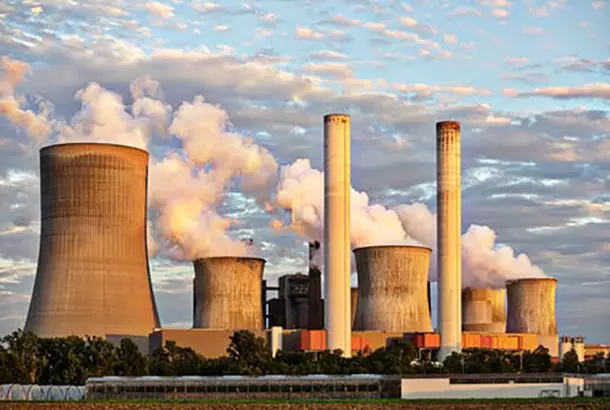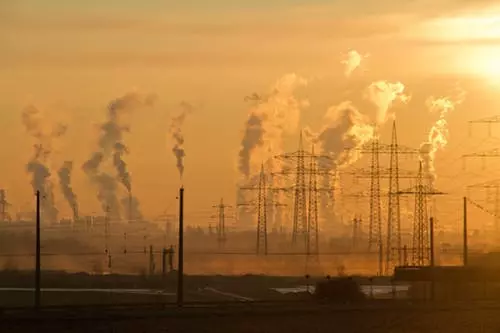THE DEVELOPMENT OF ELECTRIC POWER
2022-08-12
2019-09-11
Electrical power is a kind of energy which is powered by electric energy. The invention and application of electric power set off a second industrial climax, from which science and technology changed people's lives.
First Thermal Power Plant
In 1875, the Paris North Railway Station was built as the world's first thermal power plant to provide electricity for nearby lighting. In 1879, the San Francisco Experimental Power Plant began to generate electricity. It was the first power plant in the world to sell electricity. In the 1980s, the first hydropower stations in the world were built in Britain and the United States. In 1913, the world's annual power generation reached 50 billion kilowatt-hours, and the power industry has entered the field of human production activities as an independent industrial sector.

In the 1930s, the United States became an advanced country in the power industry, with 31 units of 200,000 kilowatts, and 9 medium-sized thermal power plants with a capacity of 300,000 kilowatts. In the same period, the hydropower unit reached 50,000 to 100,000 kilowatts. In 1934, the grand coulee hydroelectric power station started construction in the United States had a planned capacity of 8.88 million kilowatts. It generated electricity in 1941. By 1980, it had a installed capacity of 6.49 million kilowatts. By the mid-1980s, it had been the world's largest hydropower station.
Electricity Development
In 1950, the world's power generation increased to 958.9 billion kWh, 19 times that of 1913. In the 50s, 60s, and 70s, the average annual growth rates were 9.4%, 8.0%, and 5.3%, respectively. From 1950 to 1980, power generation increased by 7.9 times, with an average annual growth rate of 7.6%, which is equivalent to doubling every 10 years. In 1986, the world's hydropower generation accounted for 20.3%, thermal power accounted for 63.7%, nuclear power accounted for 15.6%; US hydropower accounted for 11.4%, thermal power accounted for 72.1%, nuclear power accounted for 16.0%; former Soviet Union hydropower accounted for 13.5%, thermal power accounted for 76.4%, Nuclear power accounted for 10.1%; Japan's hydropower accounted for 12.9%, thermal power accounted for 61.8%, nuclear power accounted for 25.1%; China's hydropower accounted for 21.0%, and thermal power accounted for 79.0%. At that time the largest proportion of nuclear power in the world is France, accounting for 74.6% of total power generation in 1989.
Development of High-voltage and Ultrahigh-voltage Transmission
In the 1970s, the power industry entered a new era characterized by large power plants, high-voltage and ultrahigh-voltage transmission. In 1973, the 1.3 million kilowatt twin-shaft generator set manufactured by Swiss BBC was put into operation at the Kembland Power Plant in the United States. The Soviet Union manufactured and put into operation the world's largest 1.2 million kilowatt single-shaft steam turbine generator set in 1981. By 1977, the United States had 120 large thermal power plants with installed capacity of more than one million kilowatts. In 1985, the Soviet Union had 59 thermal power plants with a capacity of more than one million kilowatts. In 1983, Japan had 32 thermal power plants with a capacity of more than one million kilowatts. The total capacity of the Kagoshima Power Plant was 4.4 million kilowatts, making it the world's largest fuel-fired power plant. The world's largest nuclear power plant is Japan's Fukushima nuclear power plant, with a capacity of 9.096 million kilowatts.

From self-excited generators to nuclear reactors, from experimental arc lamps to 10 million volts of high voltage DC, the development of electricity never stops. With the development of electricity, related industries have also undergone qualitative changes, such as lightning arresters, electric cables and cable accessories, electric fittings and so on. The rapid development of electric power has provided a reliable guarantee for national energy security and guaranteed the society's demand for electricity.
Jecsany Electrical Equipment is a professional supplier including power fittings, cable accessories, electrical tools, insulators, arresters, fuses, disconnecting switch, transformers, and various circuit breakers, reclosers, and switchgear.
Get more details about our company and products, please visite our website: https://www.jecsany.com/
Previous:HOW IS ELECTRICITY TRANSMITTED?




